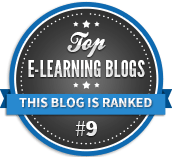Webinar Recap: Transforming Onboarding into a Culture of Continuous Learning
Key takeaways:
|
Onboarding is a critical process that sets the tone for an employee’s journey within a company. Yet, the traditional approach of limiting onboarding to the first 30, 60, or 90 days is often insufficient for fostering long-term engagement and productivity. Organizations must move beyond these boundaries and embrace a continuous learning culture to ensure that employees not only integrate but thrive.
In a recent webinar titled “30, 60, 90 and Beyond,” Litmos Chief People Officer Kylie Stair shared gamechanging strategies and insights for revolutionizing the way HR and L&D teams onboard new employees.
To learn how you can transform your onboarding program to drive continuous employee development and engagement, watch the full recording of “30,60,90 and Beyond” or read on for a summary of the virtual session..
Applying the 70-20-10 model to onboarding
Stair explored the popular 70-20-10 model, which assesses the three ways that individuals learn most effectively within organizations. According to the model, 70% of learning occurs on-the-job through hands-on experiences, projects, and daily tasks. This type of learning is dynamic and personalized, allowing employees to develop competencies directly aligned with their roles.
Meanwhile, 20% of learning is social learning, occurring through social interactions such as mentorship, peer-to-peer collaboration, and feedback from colleagues and managers. This approach can help employees build institutional knowledge and strengthen the contextual understanding of their roles.
The last 10% of this model includes formal learning, which are defined as structured L&D programs such as eLearning, in-classroom training, and certifications.
During her session, Stair argued that, although many organizations focus heavily on formal learning programs, the majority of learning actually occurs through on-the-job experiences and social interactions. In this sense, it is important for HR and L&D teams to find opportunities for new employees to engage in more informal peer engagement when onboarding new employees.
The four pillars of effective onboarding
During the webinar, Kylie Stair stressed that good onboarding goes far beyond paperwork and orientation sessions. “A very good onboarding experience covers four main pillars: it provides engagement and connection for this employee starting on day one, it provides role clarity and expectations, it provides cultural integration, and it provides skill development,” said Stair. These pillars ensure that employees feel valued, understand their roles, and develop the skills necessary for their success
1. Cultivate workplace connections
Engagement begins with creating a strong emotional bond between employees and their new workplace. Stair highlighted the importance of regular check-ins and feedback loops during her session: “Giving people feedback on goals and around clarity should be happening all the time,” said Stair, “whether they’re meeting or not meeting those expectations.” This ongoing feedback fosters a sense of belonging and helps employees stay aligned with organizational goals.
2. Clarify employee roles
Role clarity is equally crucial for effective onboarding. Employees must have a clear understanding of their responsibilities, expectations, and how their work contributes to the larger organizational mission. Stair noted during the webinar that feedback mechanisms like surveys, formal check-ins, and manager calls play a vital role in reinforcing role clarity from day one.
3. Create opportunities for cultural integration
Cultural integration goes beyond day-one employee introductions or an orientation module; it entails connecting them to the company’s mission, vision, and values. Stair encouraged webinar attendees to be intentional about how they share information during onboarding. “We need to be intentional about not everything happens on day one or in week one. We need to build programs that are trickling information and continuously pushing this out to people in specific moments in time,” she explained. This method ensures that the onboarding process remains engaging and impactful over time.
4. Develop skills during onboarding
Although new hires may possess the technical skills they need to effectively do their jobs, they often need functional knowledge about the organization, its products, and customer base in order to thrive. For onboarding to help employees apply their existing skills more effectively within the company’s unique context, skill-building should include knowledge of company processes, methodologies, and goals – all of which are vital for employees to successfully adapt to their new roles.
How managers can drive onboarding success
Aside from sharing onboarding best practices, Stair also explored wider organizational criteria for implementing effective onboarding programs. Specifically, she discussed the indispensible role that managers play in shaping the onboarding experience. “The manager is one of the most critical components of providing a strong onboarding experience for everyone,” she argued. However, for managers to be effective, they need ample support and resources from HR and Learning and Development (L&D) teams.
Leverage structured frameworks and checklists
Managers need frameworks to devise comprehensive onboarding strategies, according to Stair. However, managers should avoid treating onboarding as a one-and-done activity. As Stair succinctly put it: “Onboarding is not a checklist, but you can use checklists in onboarding.”
For example, Litmos has developed a buddy program and a structured onboarding framework to guide managers and buddies through intentional topics and activities. “At Litmos, in our organization, we created this buddy program for our new hires since we’re fully remote, but we also create a structure for our buddies to go through what would be a great thing for you as a buddy to go through around intentional topics,” she elaborates.
Run manager enablement Sessions
Regular enablement sessions are another valuable tool for keeping managers aligned with learning and business goals as they execute onboarding programs. Stair shares, “We host monthly manager calls for just overall manager enablement in general, and we break out into smaller group sessions where managers can learn from other managers and share their experiences.” These sessions provide managers with the support and knowledge they need to deliver high-quality onboarding experiences.
Adopt Just-in-Time Learning
Just-in-time learning addresses the challenges of information overload and competing priorities by providing employees with the information they need, precisely when they need it. “When we’re designing our learning programs, how are we thinking about this just-in-time learning, and a couple of things that go along with that are minimizing information overload and anticipating the learner’s needs,” explains Stair.
Stair illustrated the importance of providing relevant, just-in-time training resources with an example from customer service. “A lot of us probably have people who work in customer service. So we need to ask ourselves, how are we developing a knowledge-based article that can be searched quickly during a customer servuce call,” she explained. Making learning materials easy to find for a customer support rep – through a centralized learning libraries or a responsive AI chatbotl, for example – can empower them to more quicily and easily access relevant and accurate information, enhancing their performance and customer interactions.
By considering the diverse environments and modalities in which employees work, organizations can create on-the-job learning experiences that are practical and engaging. Stair shared an example of how this approach may look in practice: “As a worker, am I on a laptop accessing training from my computer as I sit at my desk all day? Or am I out on the floor and maybe I need to access something on a tablet or a phone that’s with me – not sitting on a desktop?”
Why make onboarding continuous?
Stair’s insights provide organizations with a roadmap for building strong continuous onboarding programs. As Kylie Stair eloquently puts it, “We need to extend that experience and beyond the first day, the first week, kind of this 30, 60, 90 and start working through this continuous learning culture.”
Onboarding shouldn’t be a single event but an evolving process that ingrains learning into the fabric of the organization. By leveraging strategies like structured frameworks, just-in-time learning, and continuous feedback, companies can empower their employees to succeed while fostering a culture of growth and innovation.
Making onboarding a continuous learning and development opportunity takes planning and resources. Luckily, Litmos has you covered with our latest onboarding toolkit, which includes customizable onboarding checklists, templates, and expert-crafted resources to help you onboard anyone in your organization. Ready to revolutionize the way you onboard? Access The Ultimate Toolkit for Continuous Onboarding to get started!




